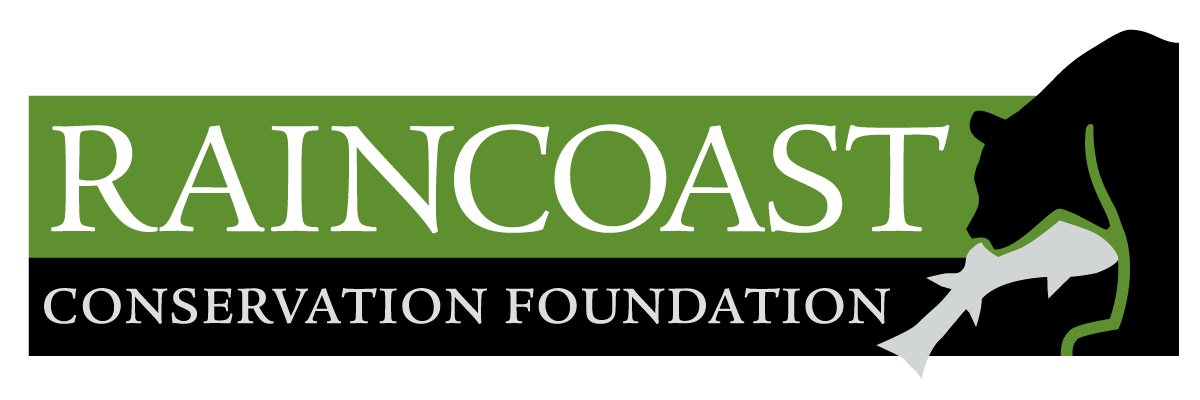Salmon DNA enables new understanding of how young Chinook salmon use the Fraser River Estuary
Raincoast’s five year collection of genetic samples illuminates patterns of migration and reliance on estuary habitats.

New research using genetic tools not available to researchers of the past, has built a story of how juvenile Chinook salmon from throughout the Fraser River watershed rely on the busy estuary and its arms in the lower river, using these habitats for months. The results reinforce the critical importance of the estuary for Chinook salmon.
This study expands on the importance of these habitats for juvenile Chinook salmon. The degraded state of the Lower Fraser River and Estuary, with up to 85% of previous habitats now either lost or disconnected by structures like dikes and floodgates, have been a federal and provincial priority for restoration. These conditions are challenging for the juvenile salmon migrating through the estuary. Today, development continues in the estuary including the Roberts Bank Terminal 2 project, which will further disconnect eelgrass habitats for the salmon that use them.
The study, “Variation in estuary use patterns of juvenile Chinook salmon in the Fraser River, BC” was published last week in the Canadian Journal of Fisheries and Aquatic Sciences.
Raincoast, in collaboration with scientists from UBC, UVic and Fisheries and Oceans Canada, collected tiny pieces of tail fin from juvenile Chinook caught along the shores of Vancouver, Richmond, Ladner and Tsawwassen during the spring and summer from 2016 to 2020. Over five years, the team amassed a large collection of genetic samples from more than 3,300 juvenile Chinook salmon.
While formative studies on Fraser River juvenile salmon were done into the 1990s, researchers had no tools to confirm where fish were coming from or how much they relied on the estuary.
Now, with modern genetic tools (like SNP1 and PBT2) juvenile Chinook from all parts of the Fraser River watershed can be linked to the Fraser’s tributaries after being caught in the estuary. Our study caught Chinook from all 18 distinct populations (Conservation Units) but most came from the Harrison and other rivers in the lower Fraser, and the South Thompson River. Most were fry that migrate in their first (versus second) year of life. These ‘sub yearlings’ are more reliant on the estuary to feed and grow than their yearling counterparts.
“We found that while individuals from all 18 Fraser Chinook populations use the estuary, Lower Fraser Chinook, primarily from the threatened Harrison River population, were present the longest between March and June” said lead author Dave Scott. “Some of these fry arrived in the estuary very small, having moved downstream soon after emerging from their eggs. These fry are choosing to rely on the estuary for that important initial growth”.
Once fry reach the estuary, juvenile Chinook need a continuum of habitats to sequentially move from the marsh in the inner estuary, to the mudflats and eelgrass habitats in the outer estuary, as they grow.
This study also found that South Thompson Chinook -the only healthy Fraser Chinook population- arrive in the estuary in June and July after most juvenile Chinook have migrated through to sea. They also stay for a shorter time relative to Chinook from the Lower Fraser (generally two months versus three). Further, relatively few were captured in the outer estuary eelgrass. These differences may be part of the population’s success.
“Our study reinforces the importance of estuary habitats and protecting marsh in the Lower Fraser River” said co-author Misty MacDuffee. But this is a difficult undertaking given the development pressures on this habitat. ‘‘Recovering Chinook salmon from the Lower Fraser and safeguarding South Thompson Chinook requires remaining estuary habitats to be protected and degraded habitat to be restored” she concluded.
Press assets
Media assets for use with attribution.
Press contacts
Dave Scott
Principal Investigator
Lower Fraser Research and Restoration Director
1-604-817-6700
@david_c_scott
dave [at] raincoast [dot] org
Misty MacDuffee
Biologist, Wild Salmon Program Director
1-250-818-2136
@duffling
misty [at] raincoast [dot] org
Citation
Scott DC, L. Chalifour, M. MacDuffee, J.K. Baum, T. Beacham, E. Rondeau and S.G. Hinch. 2024. Variation in estuary use patterns of juvenile Chinook salmon in the Fraser River, BC. Canadian Journal of Fisheries and Aquatic Sciences. doi:https://doi.org/10.1139/cjfas-2024-0012.
About Raincoast
Raincoast is a team of conservationists and scientists empowered by our research to protect the lands, waters and wildlife of coastal British Columbia. Raincoast has been undertaking research, publishing peer-reviewed science, and advocating conservation action for BC’s wild salmon for more than two decades.
